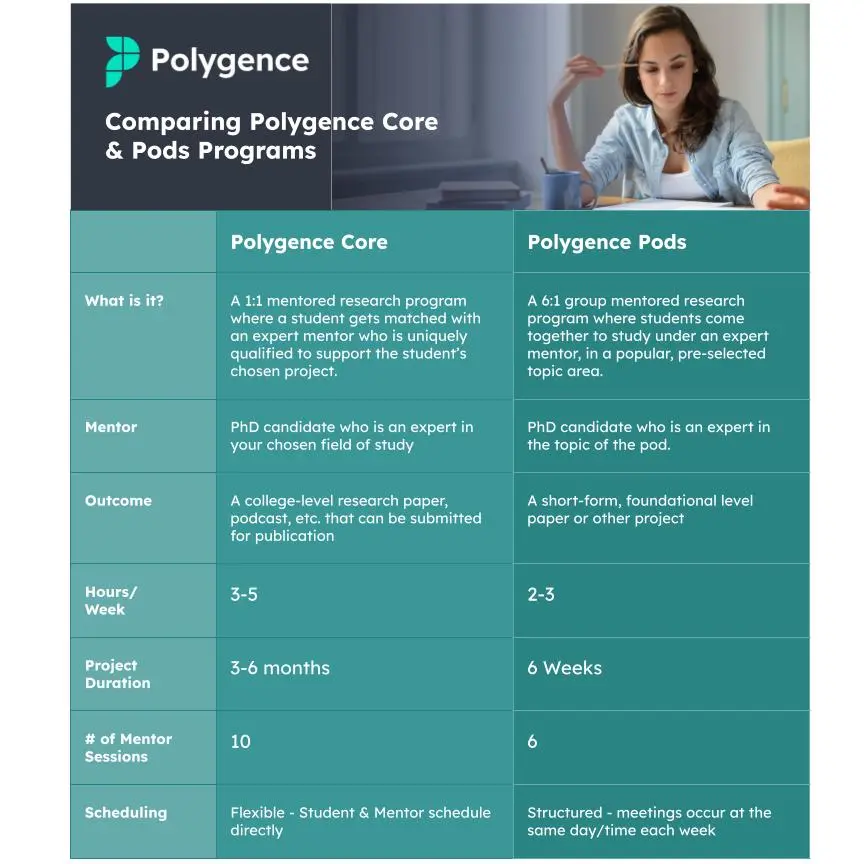10 Fashion Passion Project Ideas for High School Students
7 minute read
Fashion plays a pivotal role in society, beyond just the realm of clothing for everyday use. It serves as a form of self-expression, allowing individuals to convey their identity, creativity, and cultural affiliations. Beyond personal style, fashion can be a powerful tool for social and cultural commentary, reflecting the values, trends, and movements of society at any given time. Moreover, the global fashion industry is a major economic force, influencing production and consumption patterns worldwide.
For many teens, it may be difficult to study fashion in a traditional school setting, due to lack of opportunities. Many high schools do not offer fashion classes and there may be limited resources to explore the field. As a result, pursuing a fashion passion project as a high schooler can be a great way to take initiative and gain exposure to the topic on your own.
Finding Your Fashion Passion Project Focus
For fashion passion projects specifically, you have the unique opportunity to create a physical, hands-on product. For example, Polygence alum, Lydia, recreated a historical dress shown in an old painting, using similar materials and sewing techniques from that time period. This kind of project involves extensive research and prior knowledge of sewing, which can make it a bit challenging. But if you have the technical skills to create an original piece of clothing, this could definitely be a great type of project to pursue.
If you’re less interested in hands-on work, there’s always the option of researching a topic within fashion and finding your own unique perspective on it. There are many subtopics within fashion, like fashion ethics, sustainable fashion, luxury fashion vs. budget fashion, etc. The best way to find a project focus is just to think about what interests you the most! What kinds of fashion do you gravitate towards?
Once you've brainstormed a few ideas, seek out mentors and like-minded peers for further inspiration. Joining a Polygence Pod is a great way to accomplish both of these tasks! Polygence Pods are 6-week programs where small groups of students, guided by one of our expert Research Program Mentors, explore topics like the history of fashion. During the program, students receive both individualized and group instruction and design their own unique high school passion project — all within six weeks!
Do your own research through Polygence!
Polygence pairs you with an expert mentor in your area of passion. Together, you work to create a high quality research project that is uniquely your own.
10 Fashion Passion Project and Research Ideas
Fashion may not be widely taught at high schools, but there are still plenty of ways to get involved! In this section, we’ll explore 10 potential passion project ideas for fashion, curated by our expert Polygence mentors. Again, there are lots of subtopics within the fashion industry, so whether you’re interested in exploring sustainable fashion, predicting economic trends within the fashion industry, or researching historical fashion, there’s sure to be something of interest in the list below!
And remember, fashion is all around you! Even if it’s not part of your high school curriculum. Other great ways to explore fashion as a high school student include these Top 10 Art & Design Summer Programs for High Schoolers and these Top 20 Art and Design Competitions for High School Students.
1. Upcycled product prototype
This project would explore sustainable manufacturing and production methods as it applies to fashion, accessories, or home goods. To start, you’ll research different ideas of recycling and up-cycling as strategies for making sustainable products. Then, look at all the components of product design and development–materials, supply chain, production, and construction–through these sustainable lenses. To take it a step further, you could formulate a method for making a new, scalable, and sustainably made object/product.
Idea by fashion research mentor Allison
2. The intersection of fashion and history
We may think we know the styles of the 1970s or of the 1920s, but do we really? Can we note the difference between the 1970s in London or New York City versus a small town in Illinois; or between different social groups or subcultures? Costume designers and fashion historians must meticulously research and distill to know exactly when a photograph was taken or to confirm the origin of a garment. In this project, you can begin to learn these same techniques by observing things like quality and style of clothing, fabric, fit, socio-economic influences, as well as political and war-time changes. The changing fashion of hairstyles and makeup could be evaluated too. Further, learn about how to accurately decipher and document the status of the dress. Whether it’s the difference between a Civil War Brigadier General and a member of the Company or an 1850s woman of privilege versus her maid, there are many exciting nuances and vast distinctions to explore in status.
Idea by fashion research mentor Desira
3. Fashion brand concept
Develop a concept for your own fashion brand, including branding, logo design, and a business plan. Think through critical aspects of your brand, like what clothing types you’ll sell, your target demographic, your pricing, and marketing, and how you’ll manage your online presence vs. brick and mortar. You can even take it a step further by designing a prototype fashion collection for your brand.
4. Fashion photography
Explore fashion photography by styling and photographing your own fashion shoots. Learn about lighting, composition, and editing to create stunning fashion images. Here’s a primer on fashion photography to get you started.
Express your creative side
Interested in the Arts? We'll match you with an expert mentor who will help you explore your next project.
5. Clothing swap event
Organize a clothing swap event at your school or in your community, where people bring gently used clothing to exchange with others. This allows you to form a community of people who are interested in fashion and also gives you valuable experience in event planning. You’ll not only have to first plan where and when you’ll host the event, but you’ll also find creative ways to market the event and make sure that people know about it. Be sure to document your process for planning the event and highlights from the event itself!
6. DIY fashion blog/vlog
Start a written blog or YouTube channel where you document your personal fashion journey. You can explore content ideas like tutorials on how to create unique clothing items, style tips, and fashion inspiration. This project will help strengthen your understanding of fashion and also allow you to learn from others as you begin to build a following. You can also gain key business experience in learning how to serve and engage an audience and get traction on a content platform.
7. Sustainable fabric exploration
Research and experiment with sustainable fabric options, such as organic cotton, hemp, or Tencel. What are the advantages and disadvantages of each? How do these materials compare to what’s commonly used in the industry today? Discuss how practical it would be for a reputable fashion brand to switch to more sustainable fabric options, and how that could potentially benefit the brand.
8. Fashion and wearable tech
Explore the intersection of fashion and technology by analyzing the market for wearable tech accessories. How do these accessories balance function with aesthetics? What makes them visually appealing or unappealing?
9. Virtual styling consultations
If you’re feeling up for an entrepreneurial challenge and you’re confident in your fashion sense, offer virtual styling consultations to friends and classmates. Help them put together outfits and share your expertise with them. After doing your first several consultations, think about how to grow your business and reach new customers.
10. Community fashion show
Organize a fashion show featuring clothing and accessories created by local designers, which can include yourself and your peers. This can also be turned into a fundraiser for a charitable cause!
How to Showcase Your Fashion Passion Project
Showcasing your fashion passion project after you’ve completed your research is a very important step of the process. Showcasing is how you let your project shine and allows you to share your success with a larger audience. There are many possible ways that you can showcase your work.
For projects that are more research and history-oriented, you can explore showcasing options like publishing a paper in a journal or creating a presentation. For projects where you’re creating a piece of work like photos or clothing, you may want to consider options like creating a website or digital portfolio where your finished work can live. Finally, for projects where you’re organizing an event, don’t assume that the event itself is sufficient for showcasing your work. Make sure you find ways to document the process it took to make the event happen, whether that’s through vlogging, journaling, or taking photos at key milestones. This will really help bring your event’s story to life!
Examples of Fashion Passion Projects Completed by Polygence Students
In addition to Lydia’s project mentioned above, other Polygence students have completed passion projects related to fashion. We’ll highlight a few more of their fashion research projects here:
Sianna created a fashion magazine that showcased 10 unique dresses for different social occasions. For each dress, Sianna created a sketch and pictures of the fabrics that could be used to make it.
Alexia took a more historical approach and investigated fashion styles from the 1850s-1890s. Alexia learned to create technical drawings of the garments and also conducted research into the materials that would’ve been used for the garments. In the end, Alexia designed a set of costumes based on her research in 19th-century fashion.
Polygence Scholars Are Also Passionate About
Design YOUR Fashion Passion Project
In this article, we covered how to find your fashion passion project focus, shared ideas for fashion passion projects, and discussed how to showcase your unique project.
If you are interested in fashion and want to dive deeper by pursuing a passion project, consider signing up for one of our Polygence Pods. Collaborate with expert Polygence mentors, like Ogechi O, an MBA candidate at Duke University who’s interested in entrepreneurship and brand development, or Katharina W, an industry expert with an MFA from NYU in Costume Design for Stage and Film.
Polygence Pods, led by our skilled research mentors, offer a blend of individualized and group instruction designed to help you achieve your research goals. For more information about how Polygence can help you succeed in your high school and college career, check out reviews and testimonials from parents and past scholars. Then take a look at our latest college admissions statistics!
Related Content
Passion Projects for High School Students: Why They’re Important and How to Get Started
Using Extracurriculars to Build a Cohesive College Application
How to Write about Extracurriculars in Your Personal Statement and Supplemental Essays
Top 20 Ranked Arts & Design Competitions for High School Students
What Sets Polygence Apart from Other Research Programs for Middle and High School Students

Get Matched with a Mentor
Interested in doing one of these exciting research projects? Click below to get matched with one of our expert mentors!
